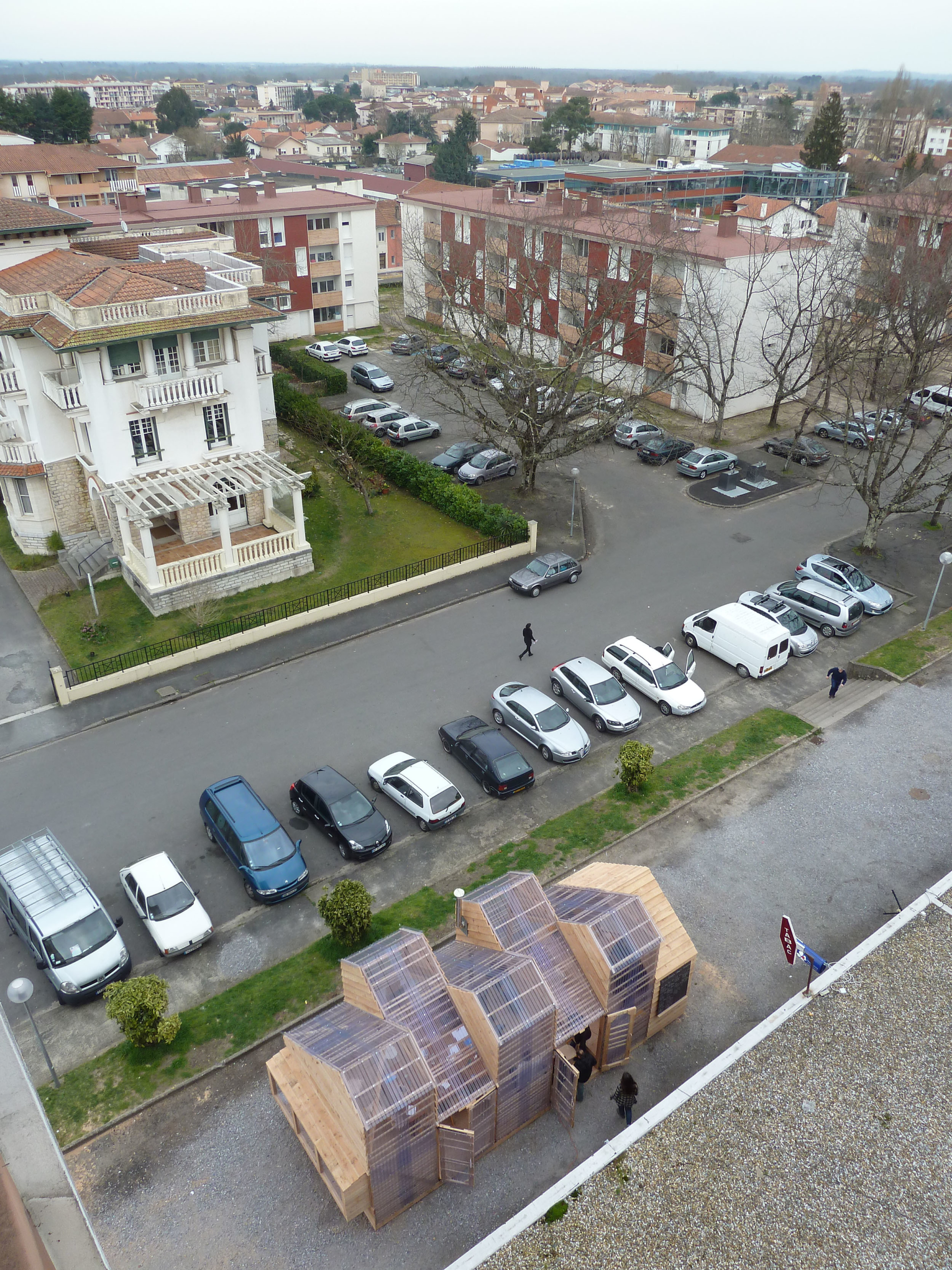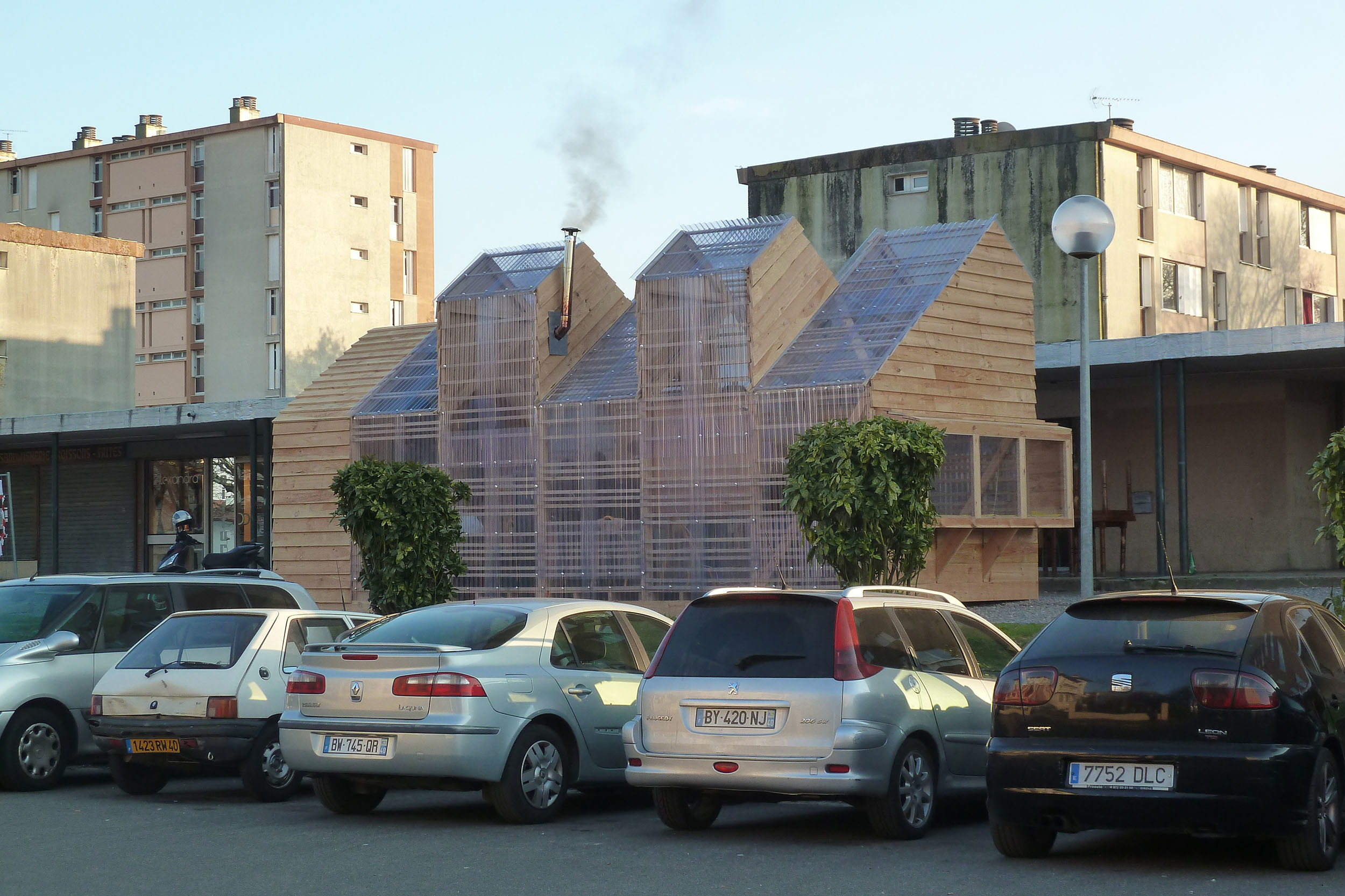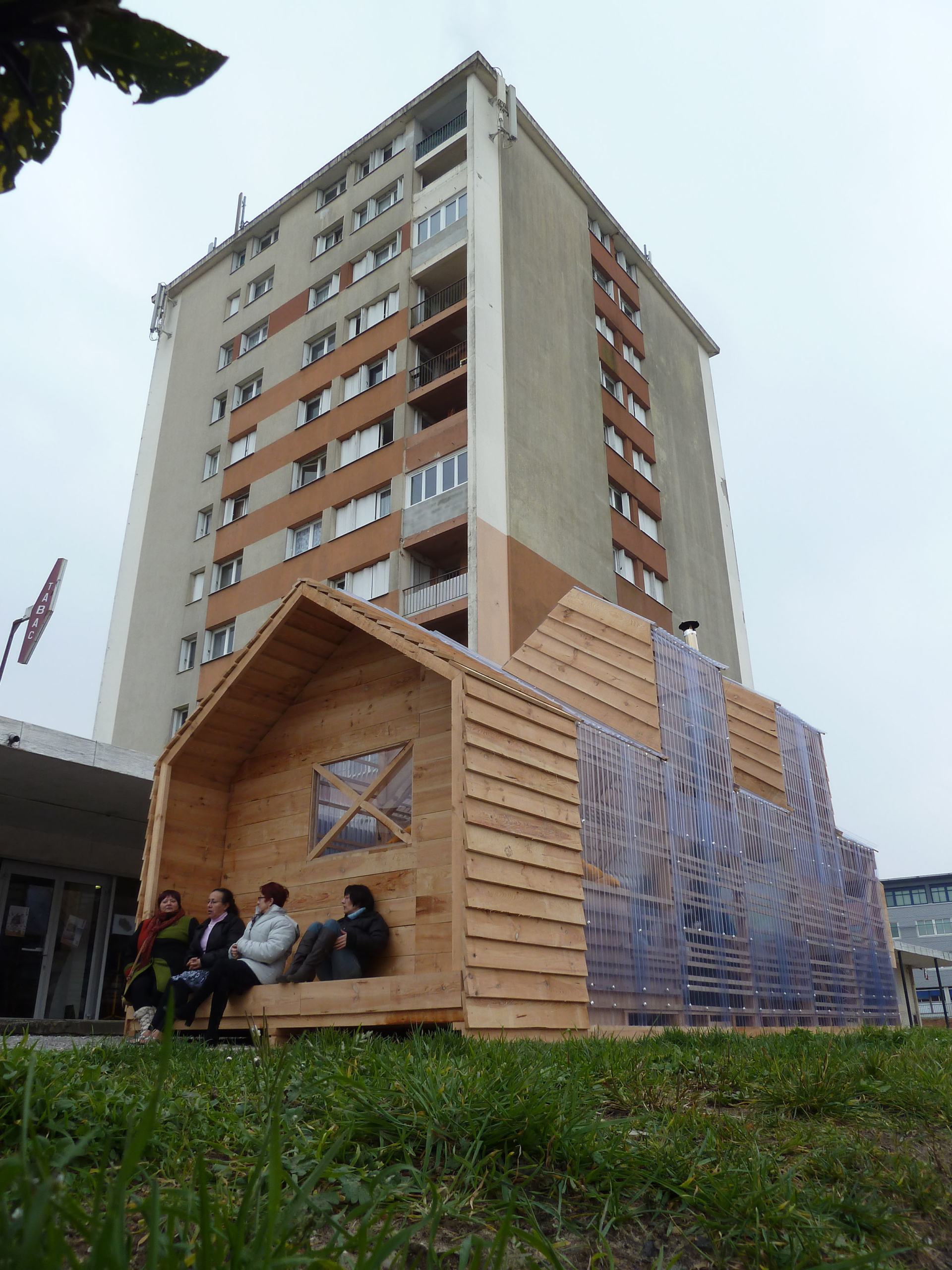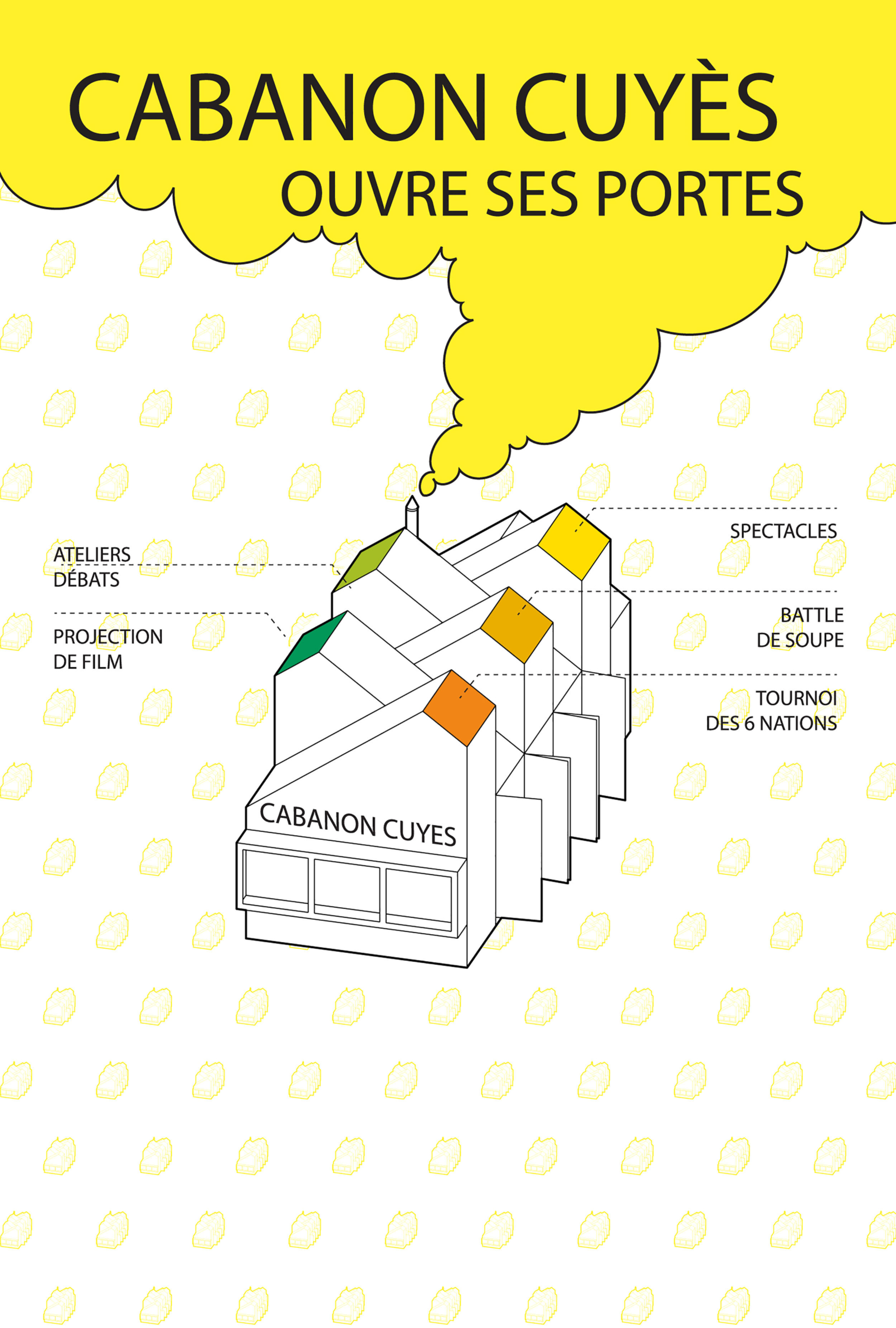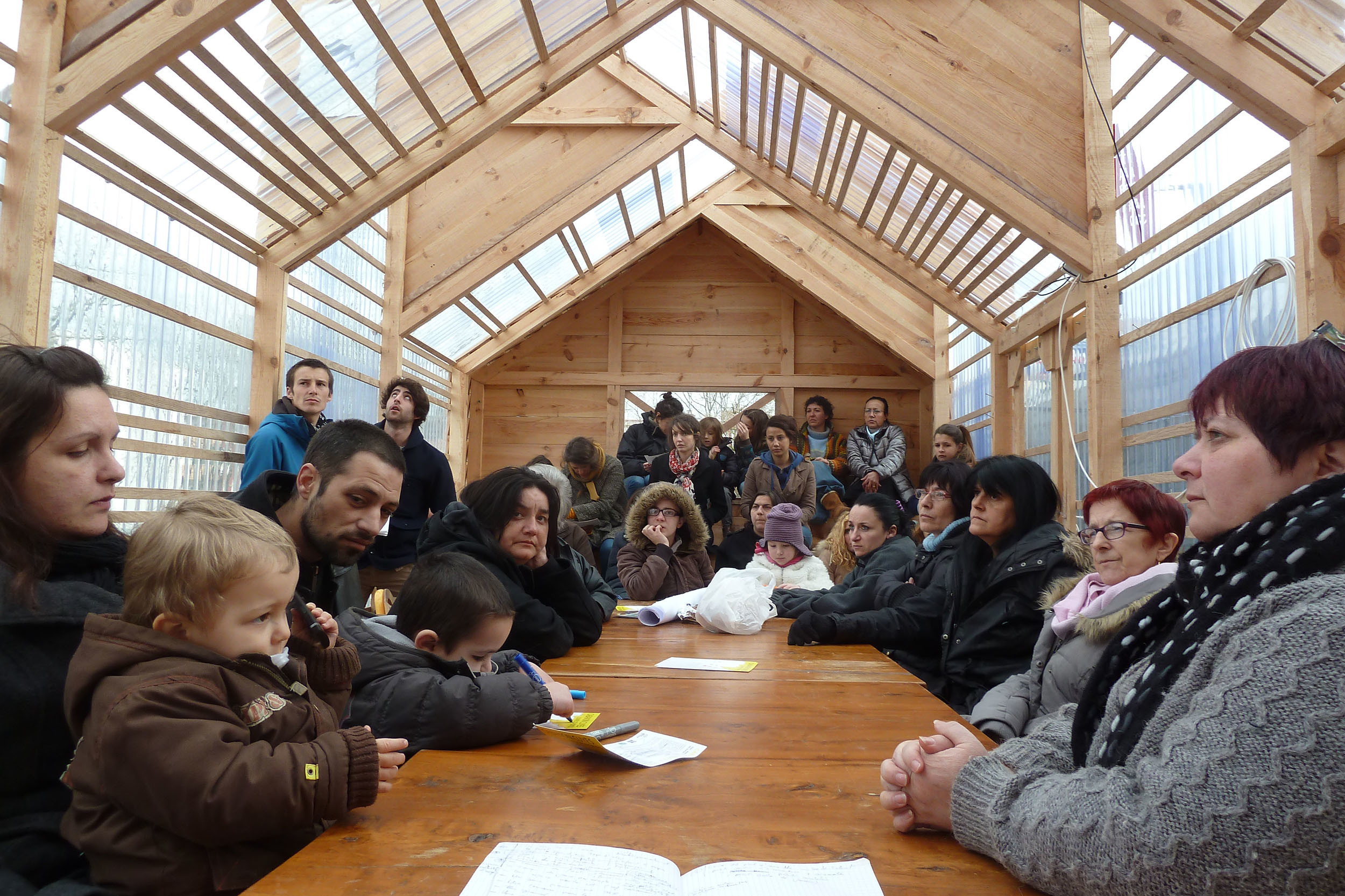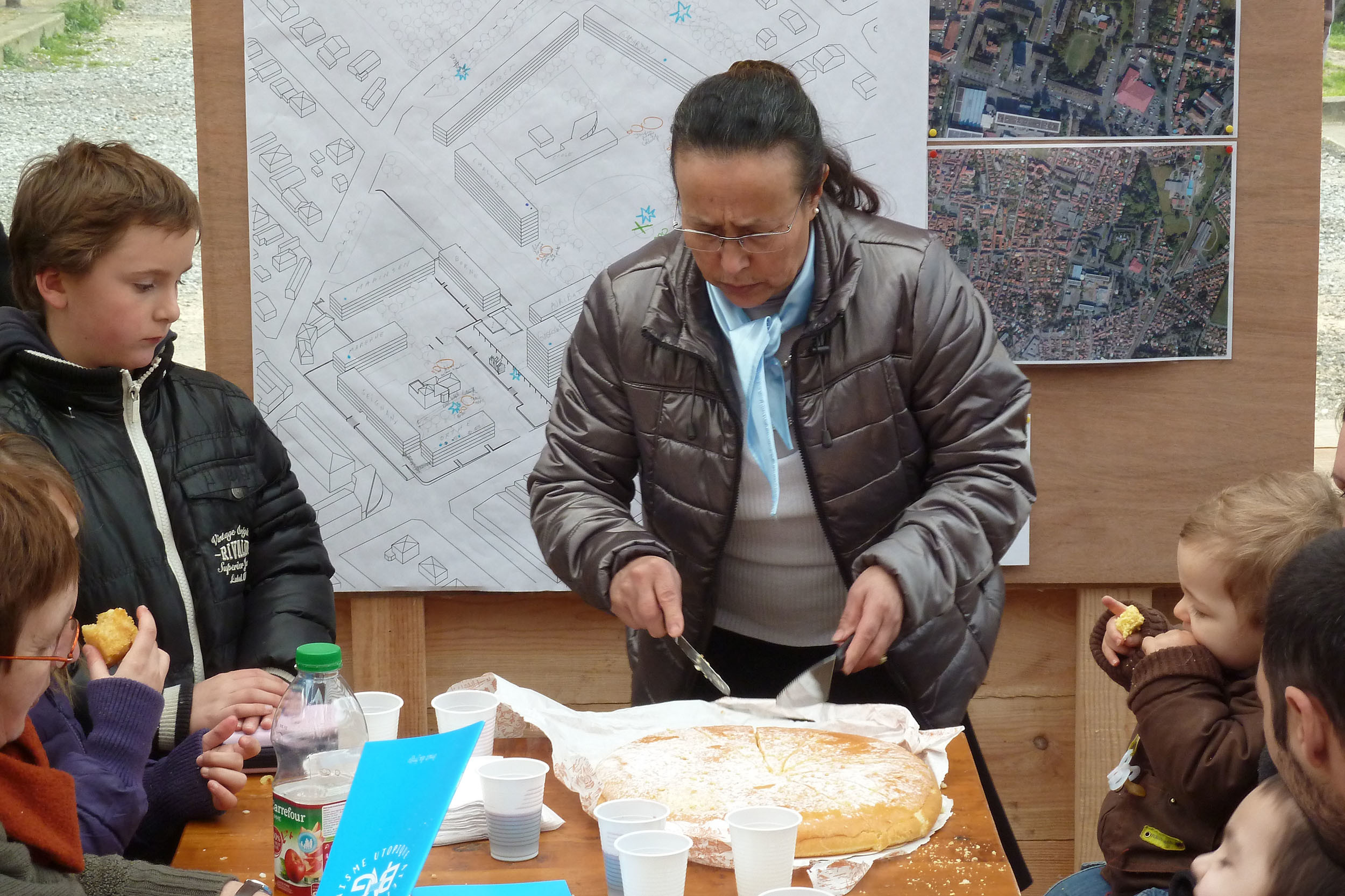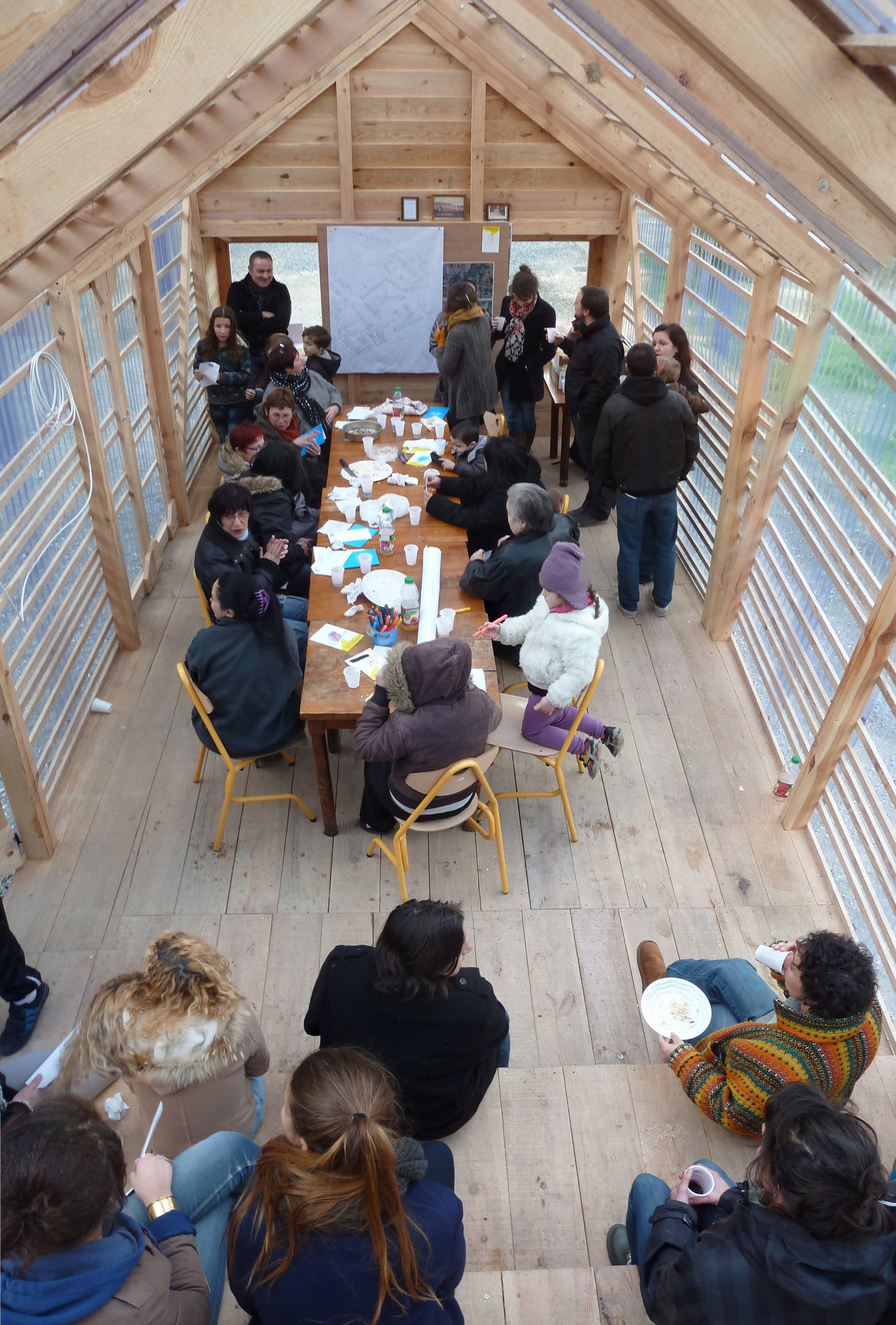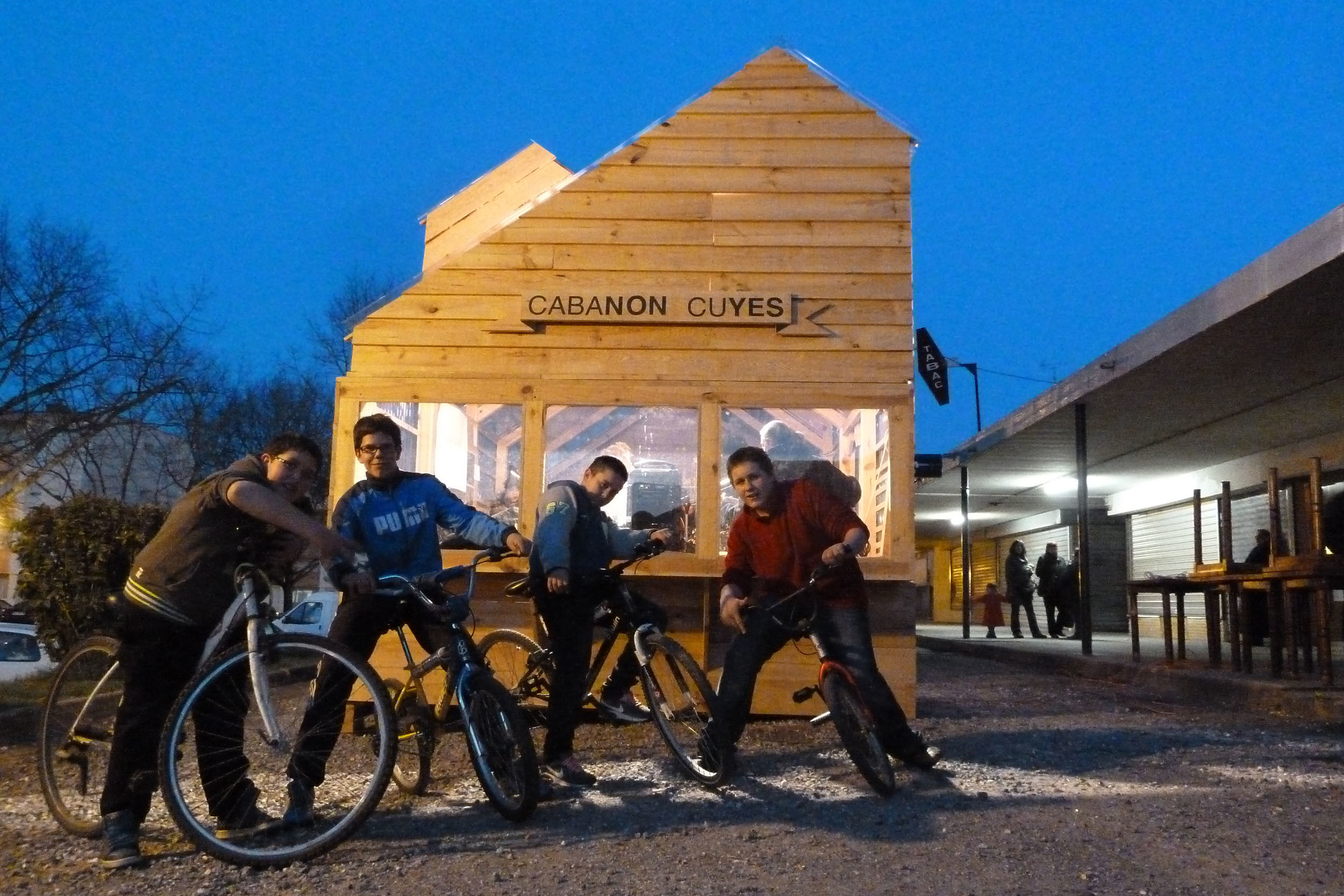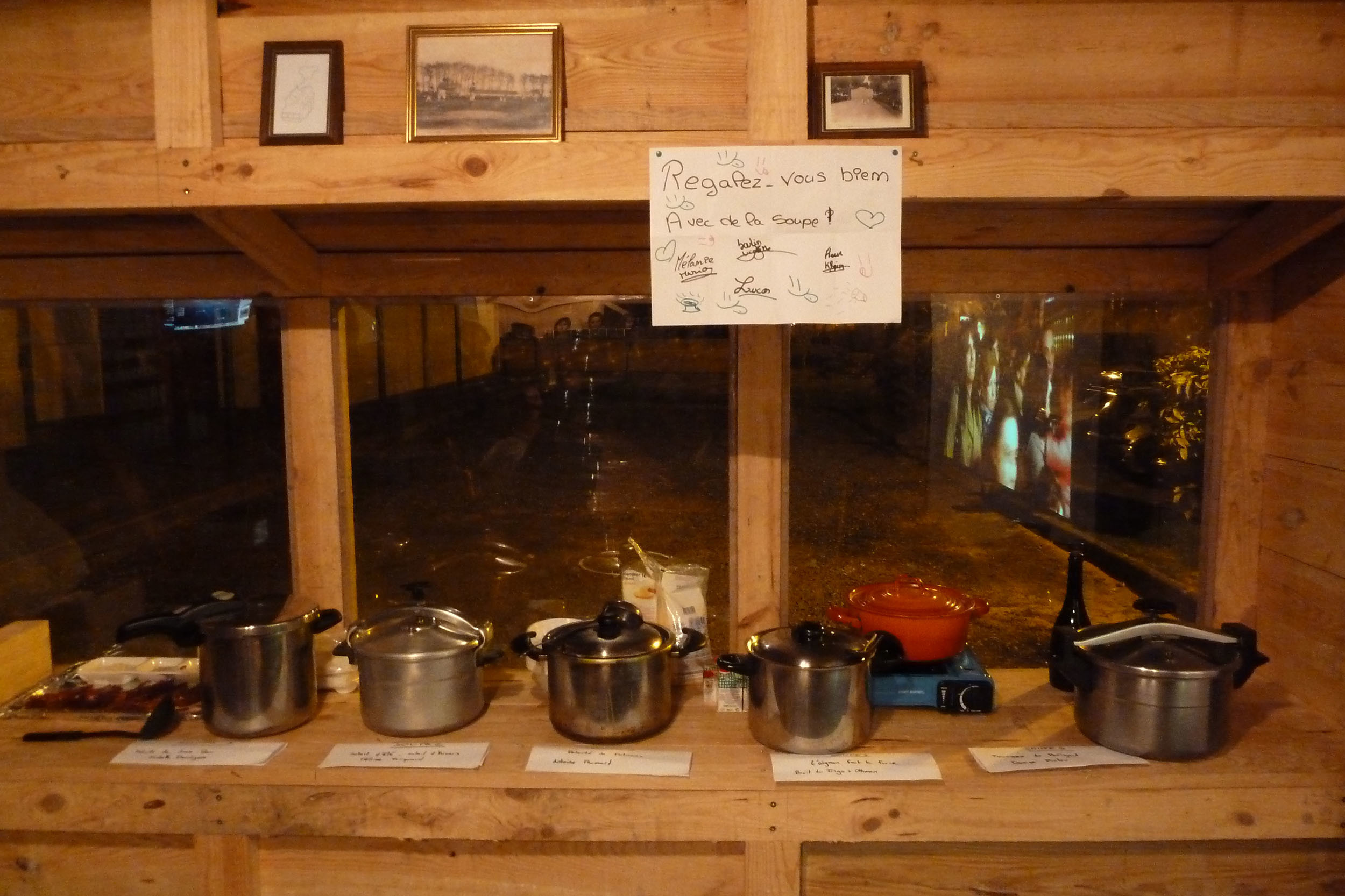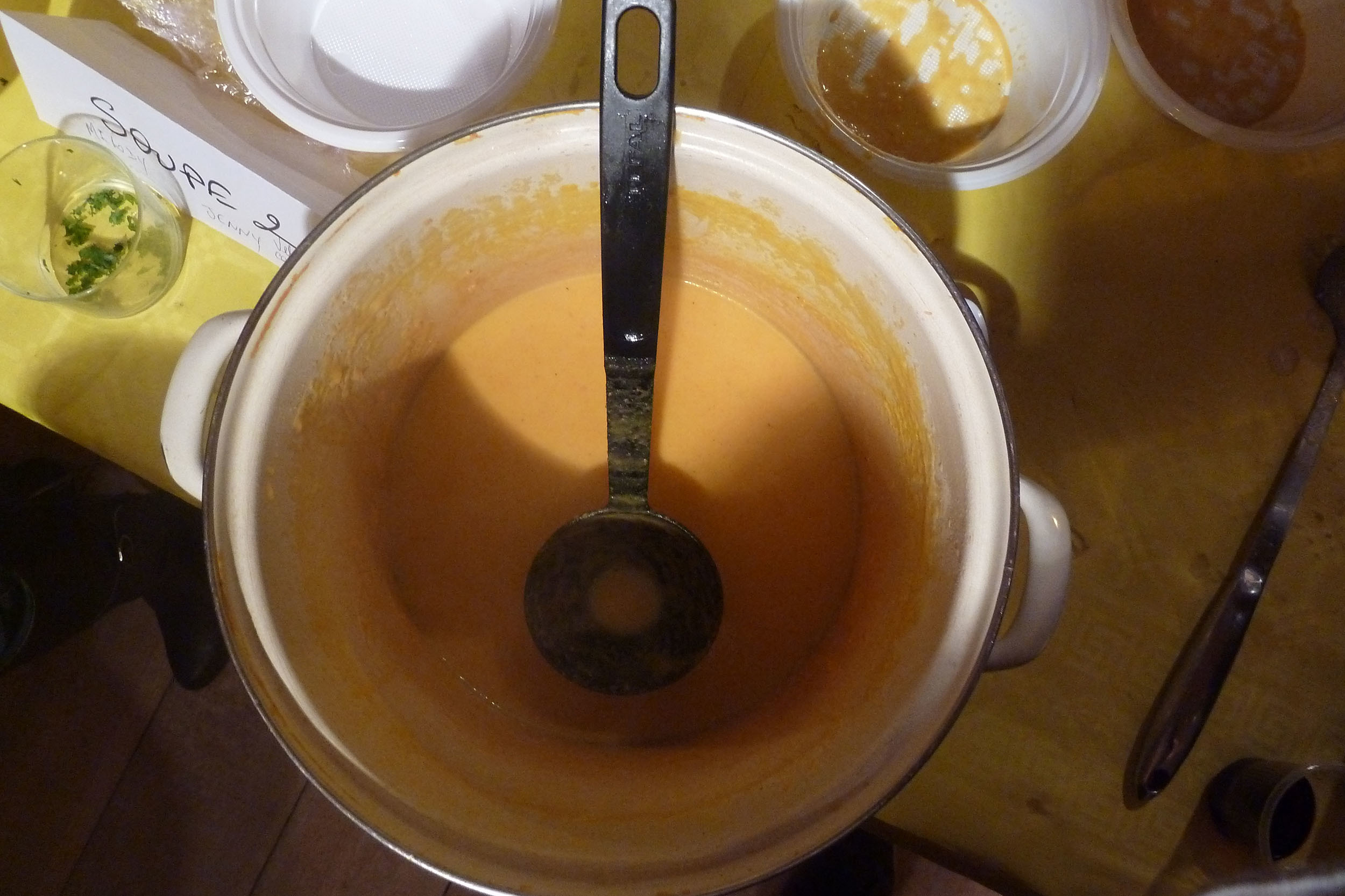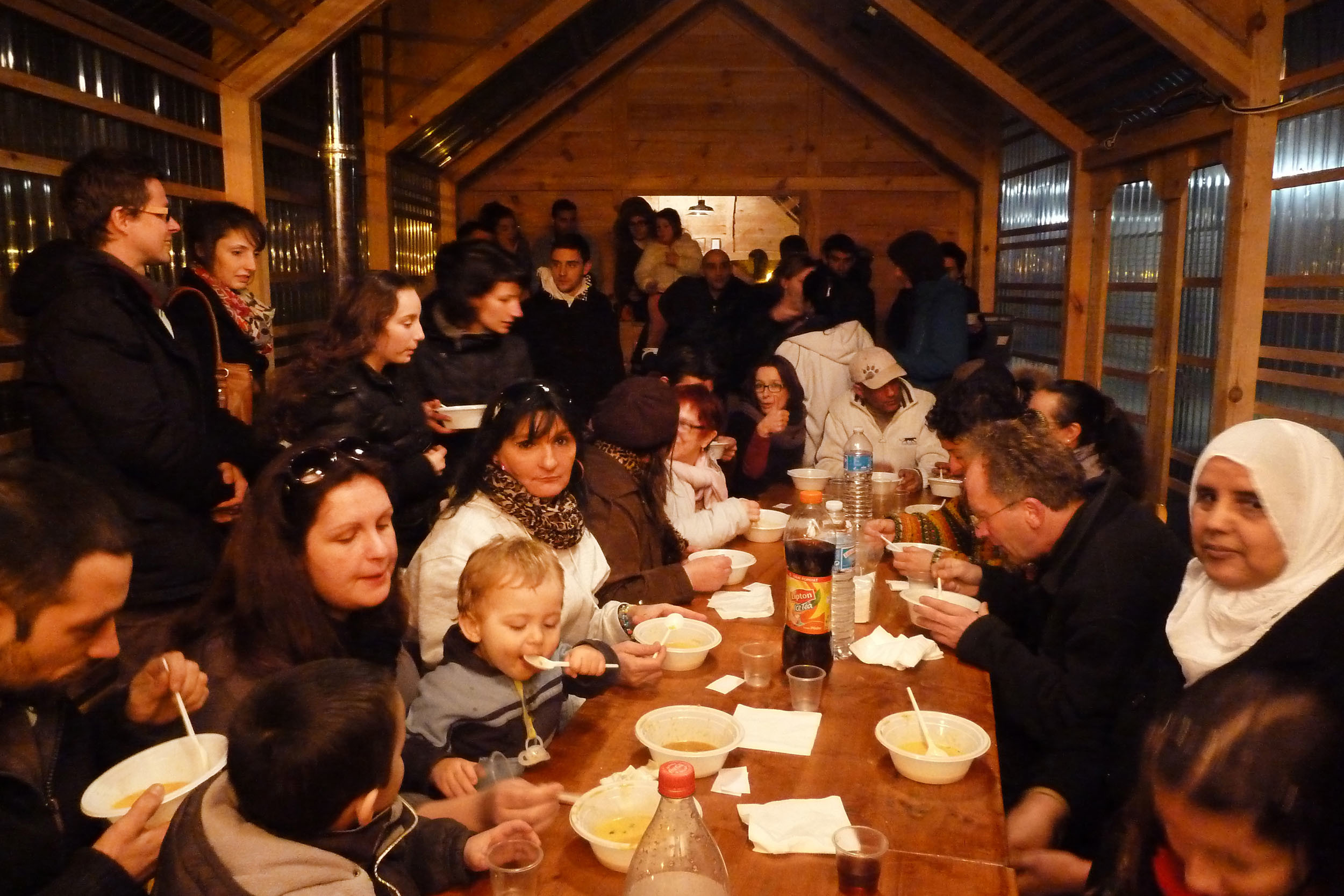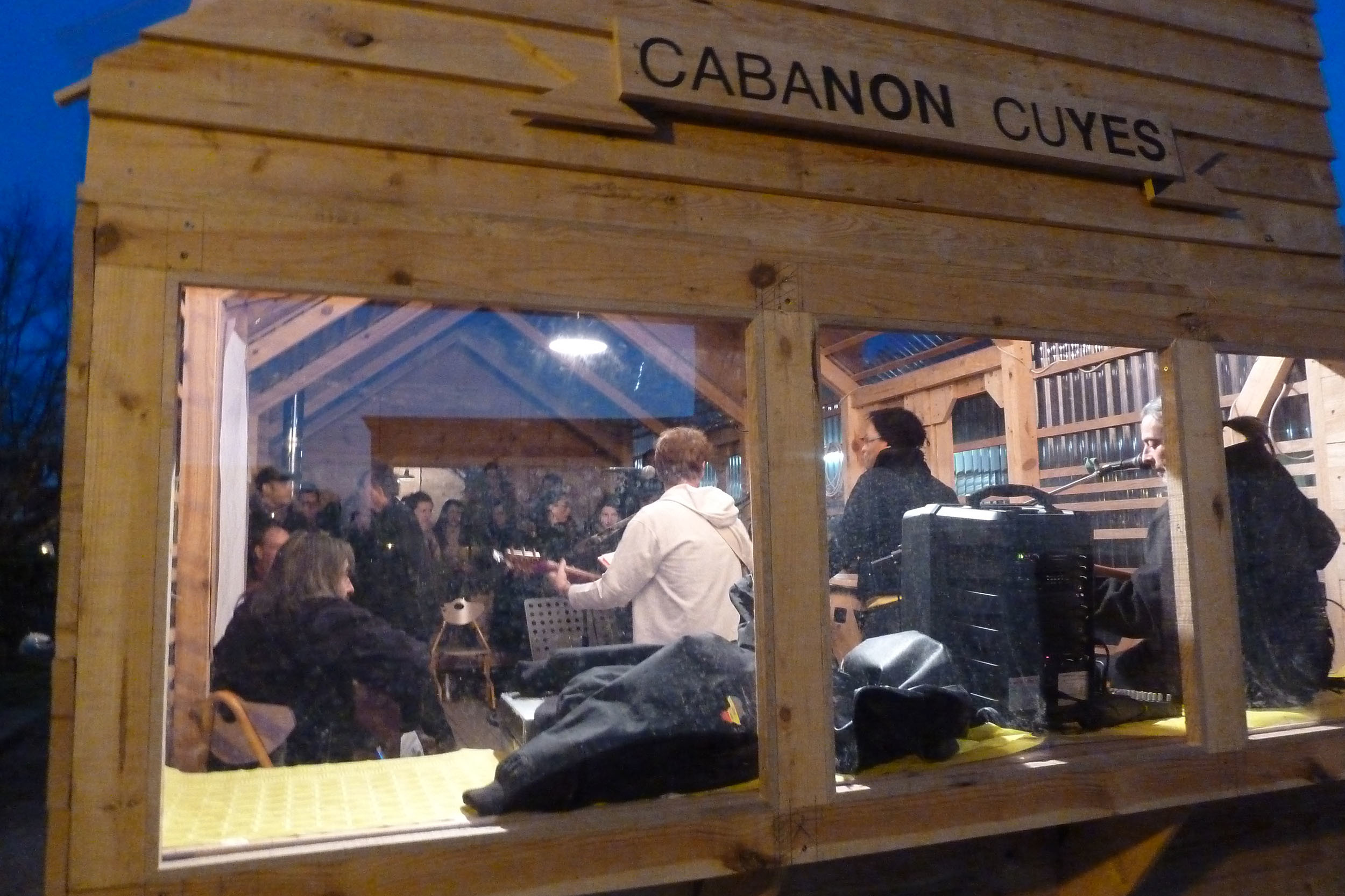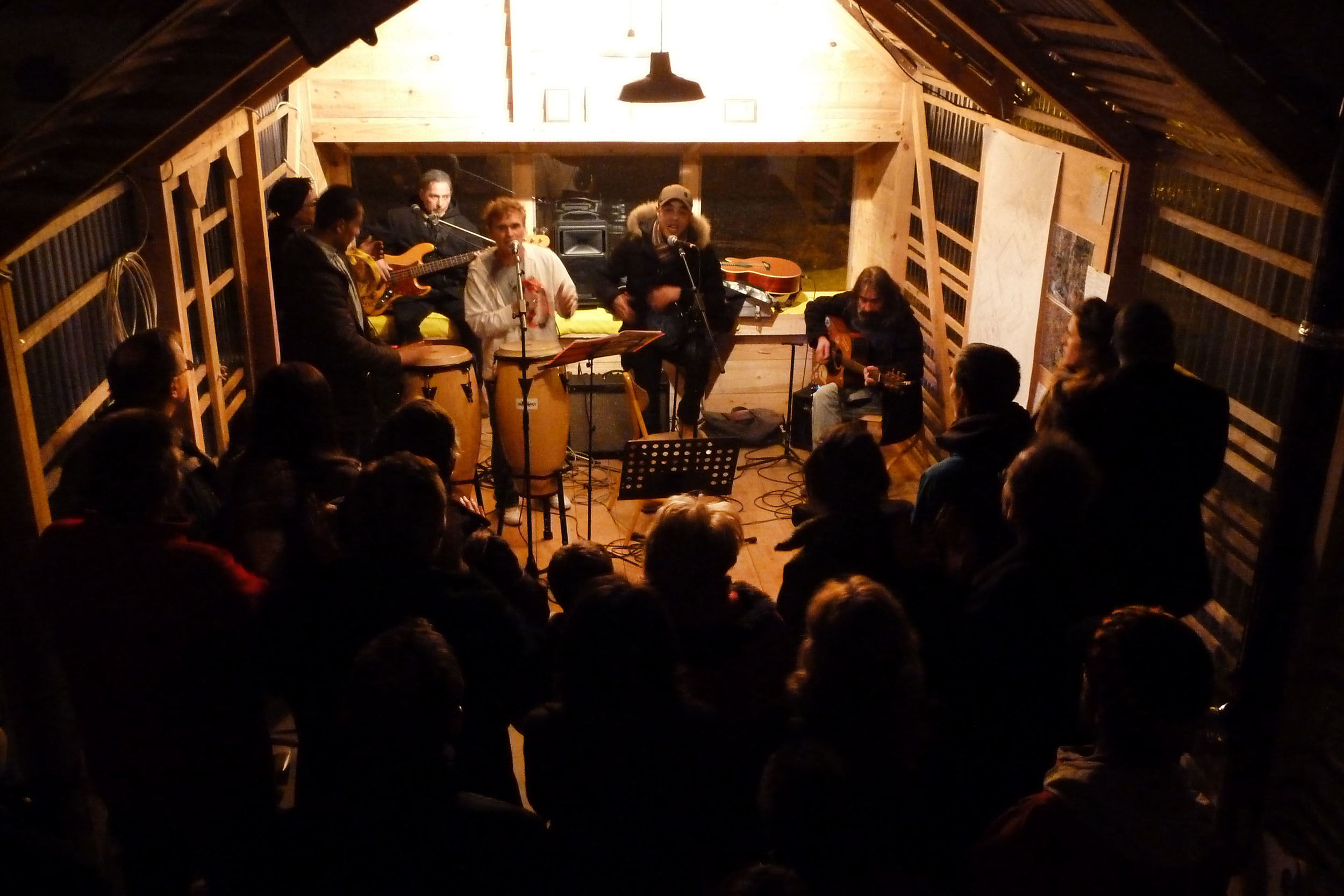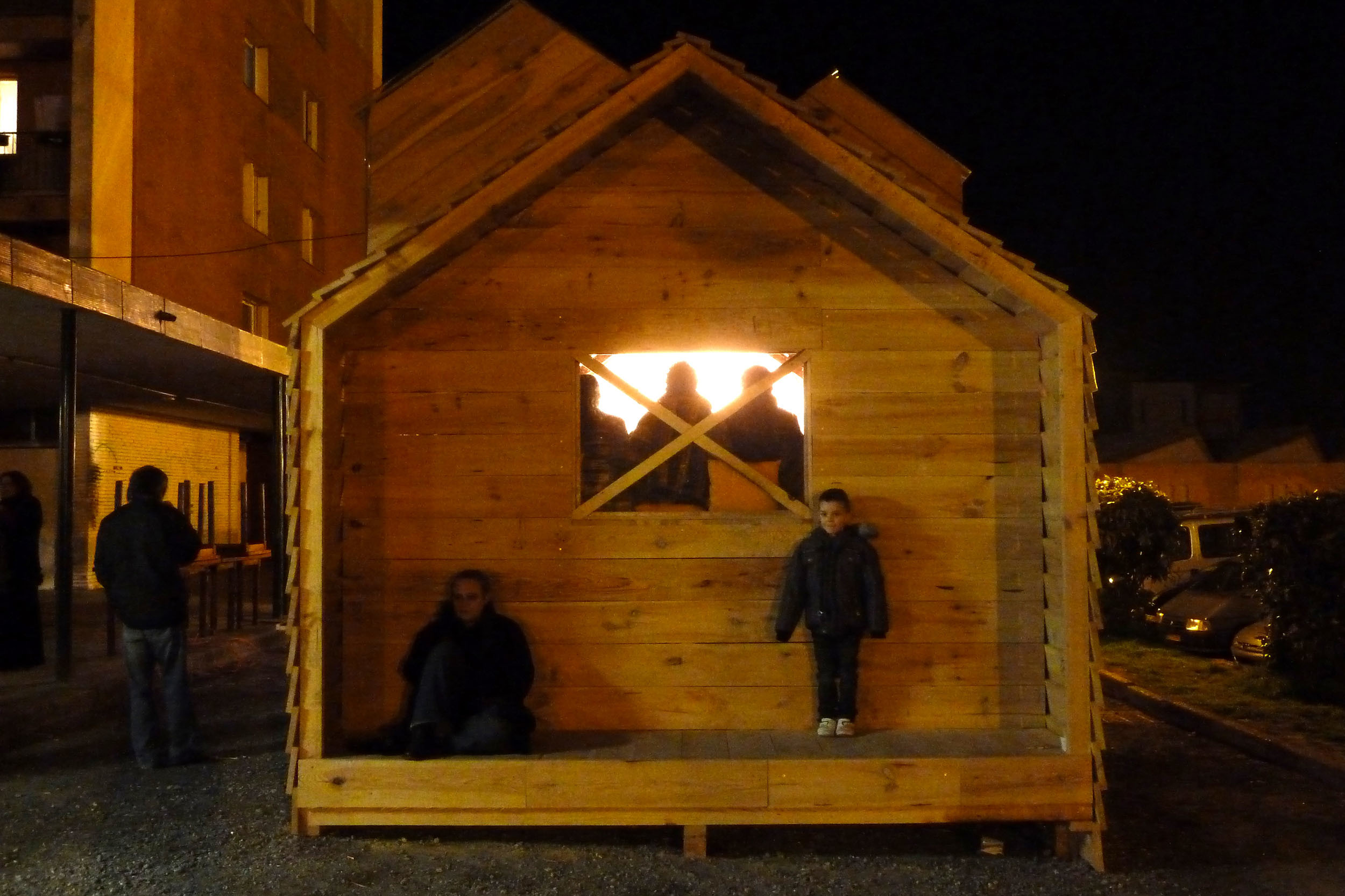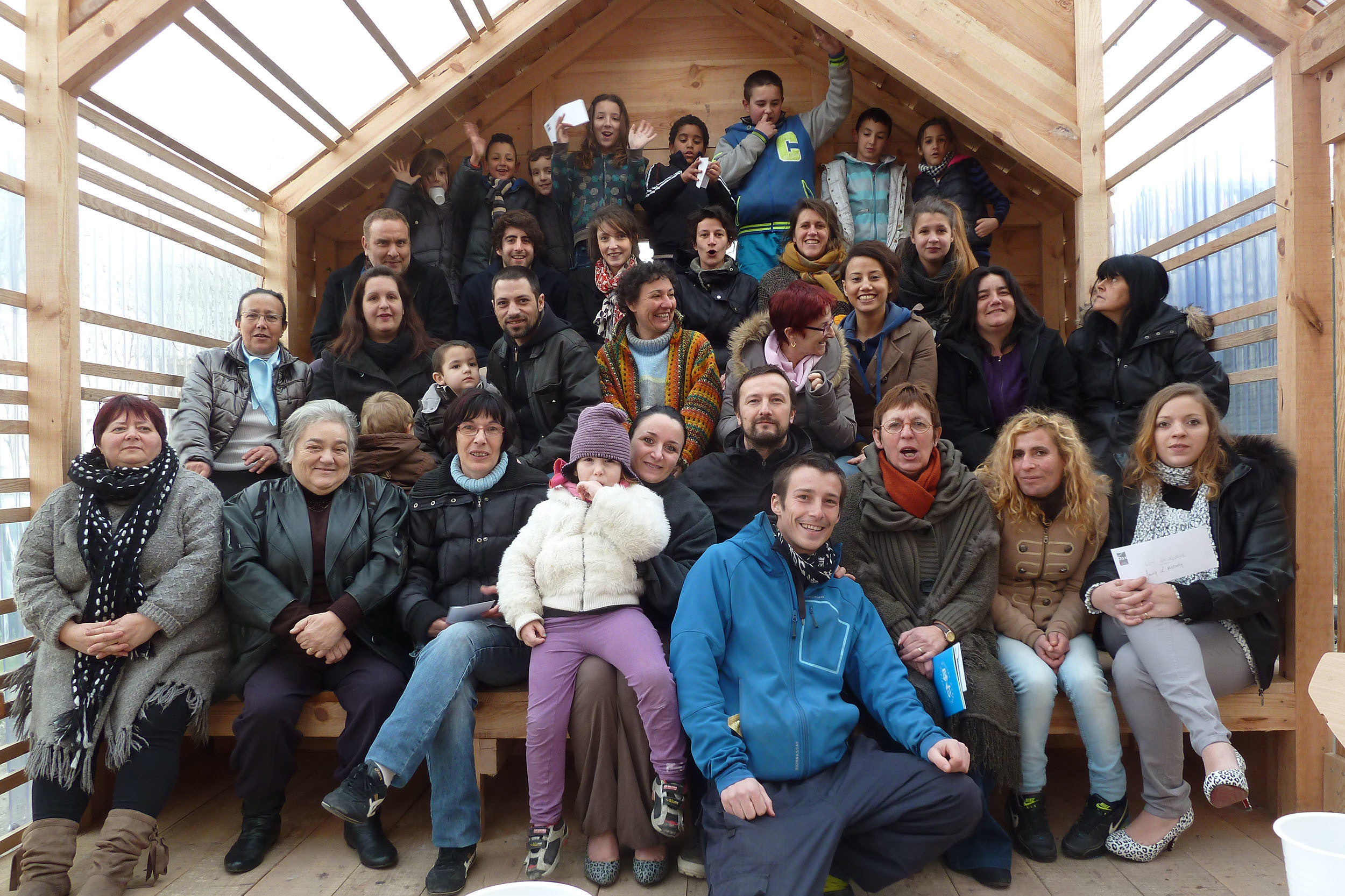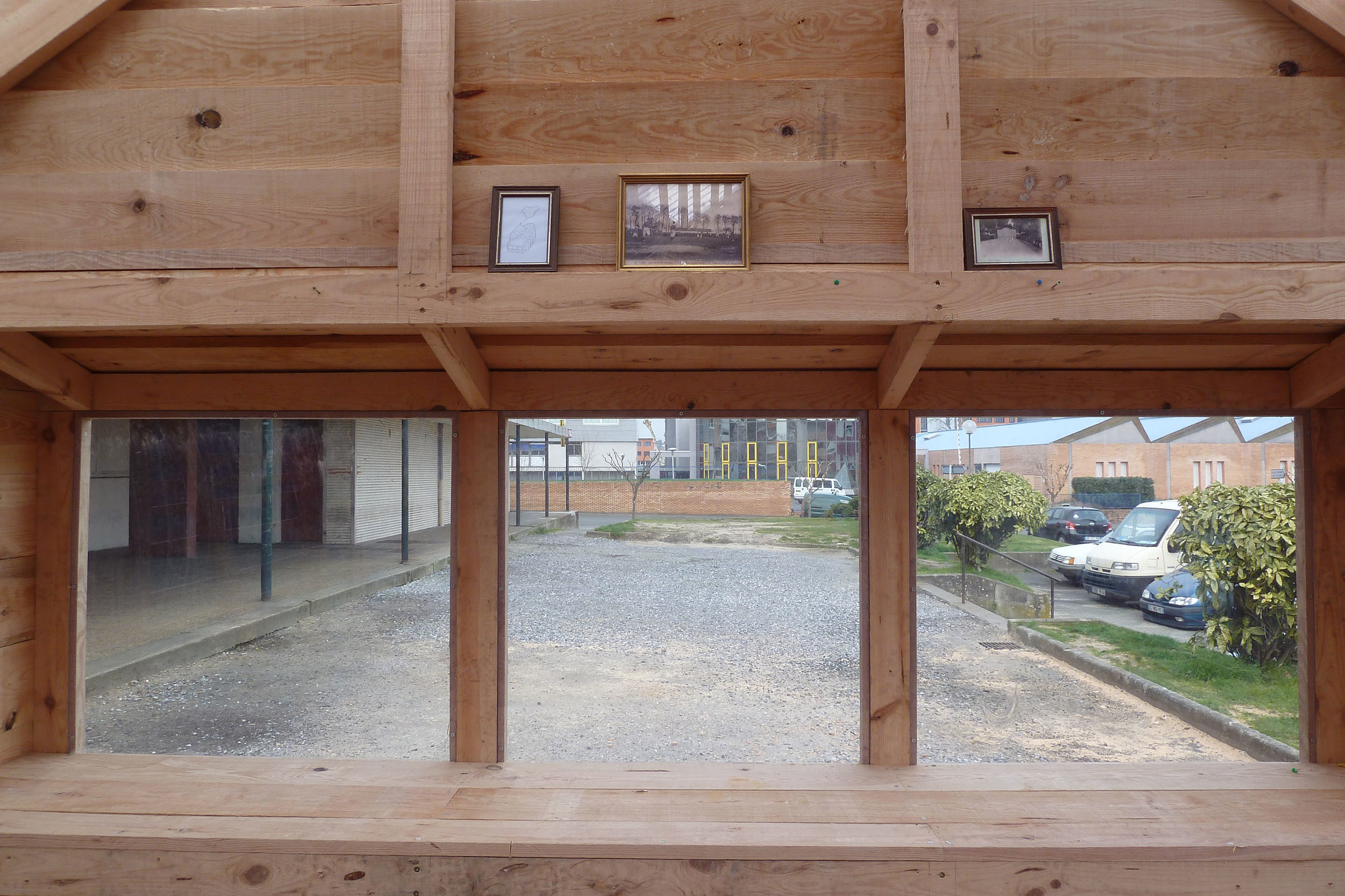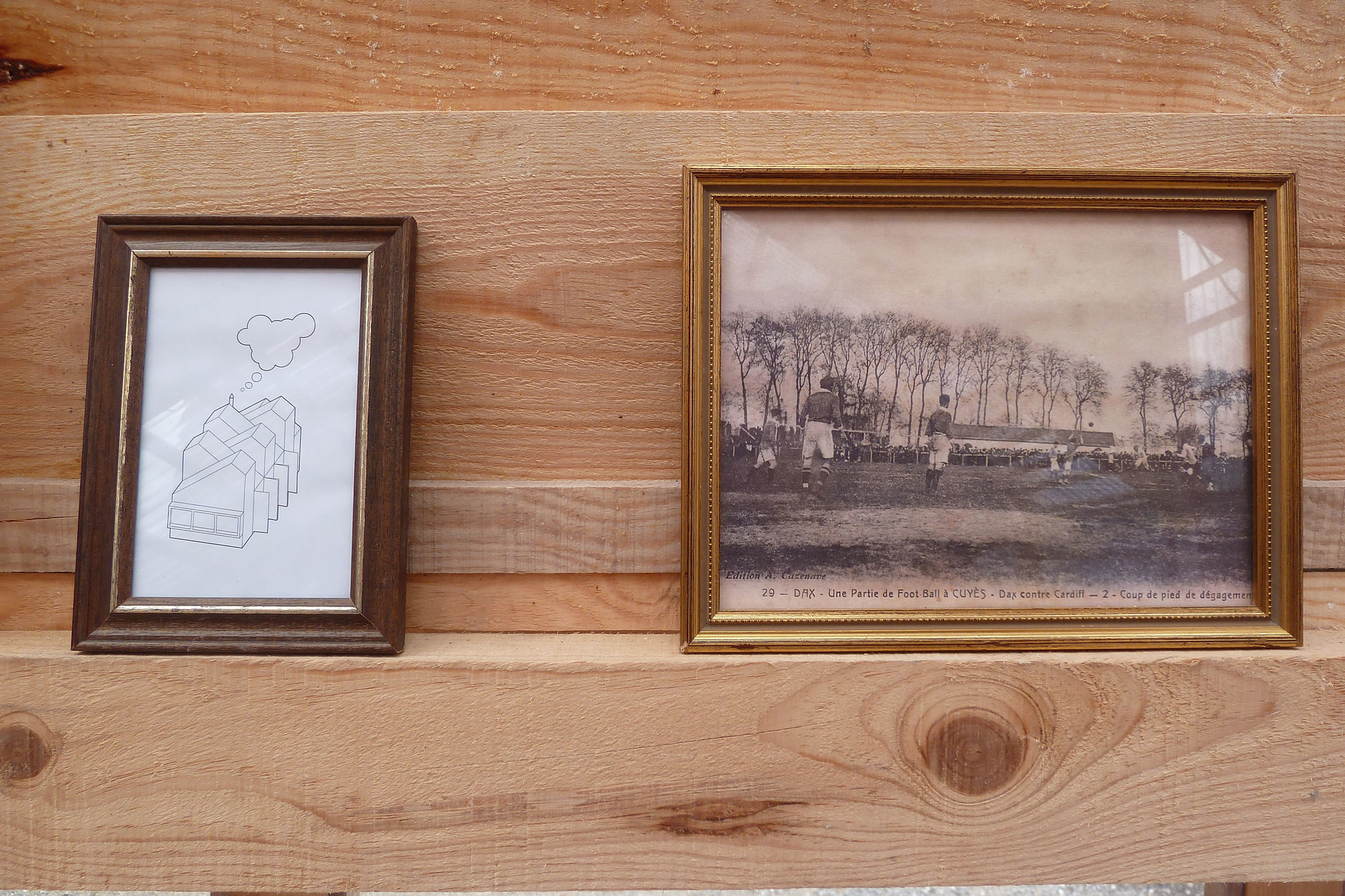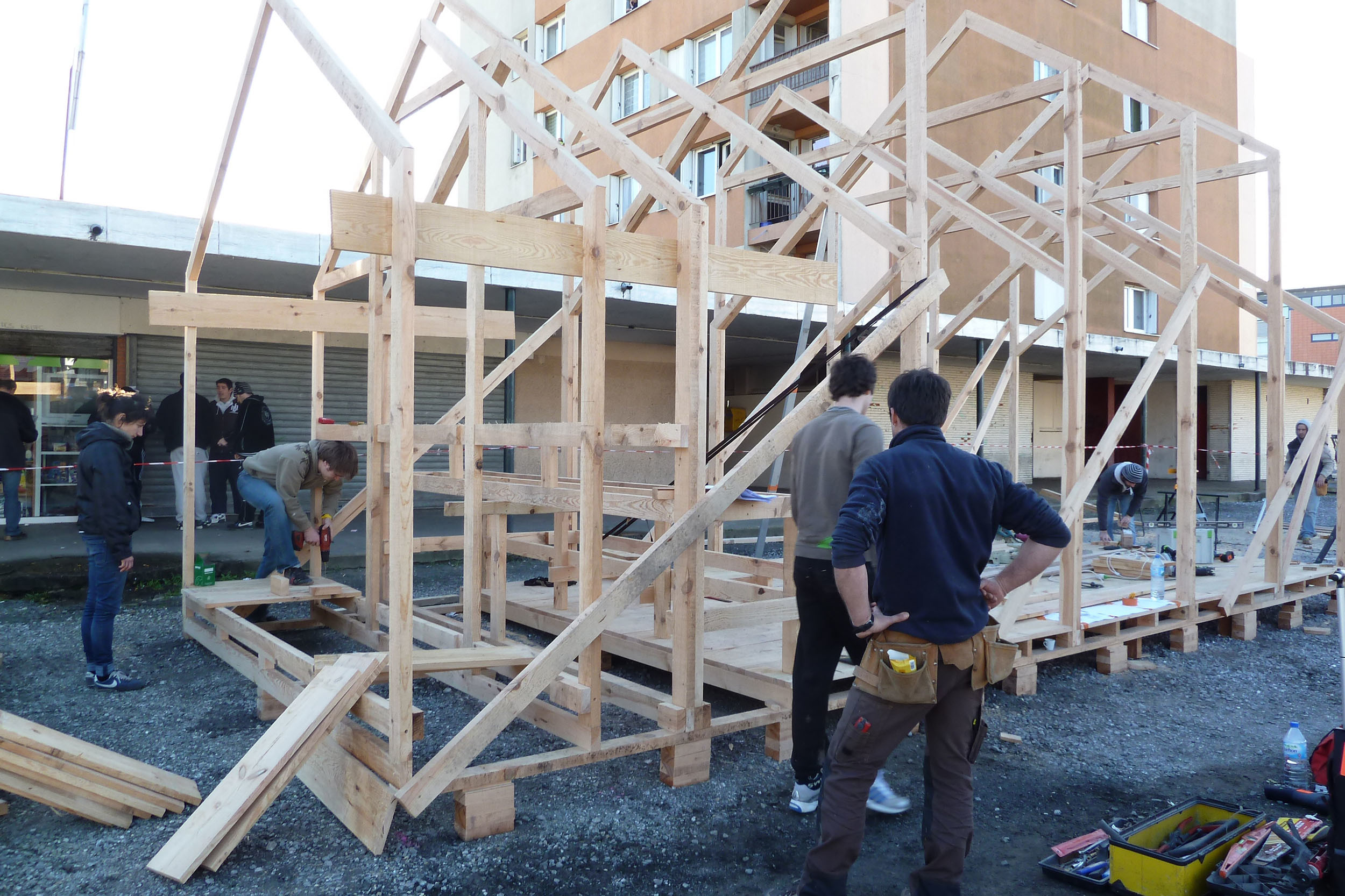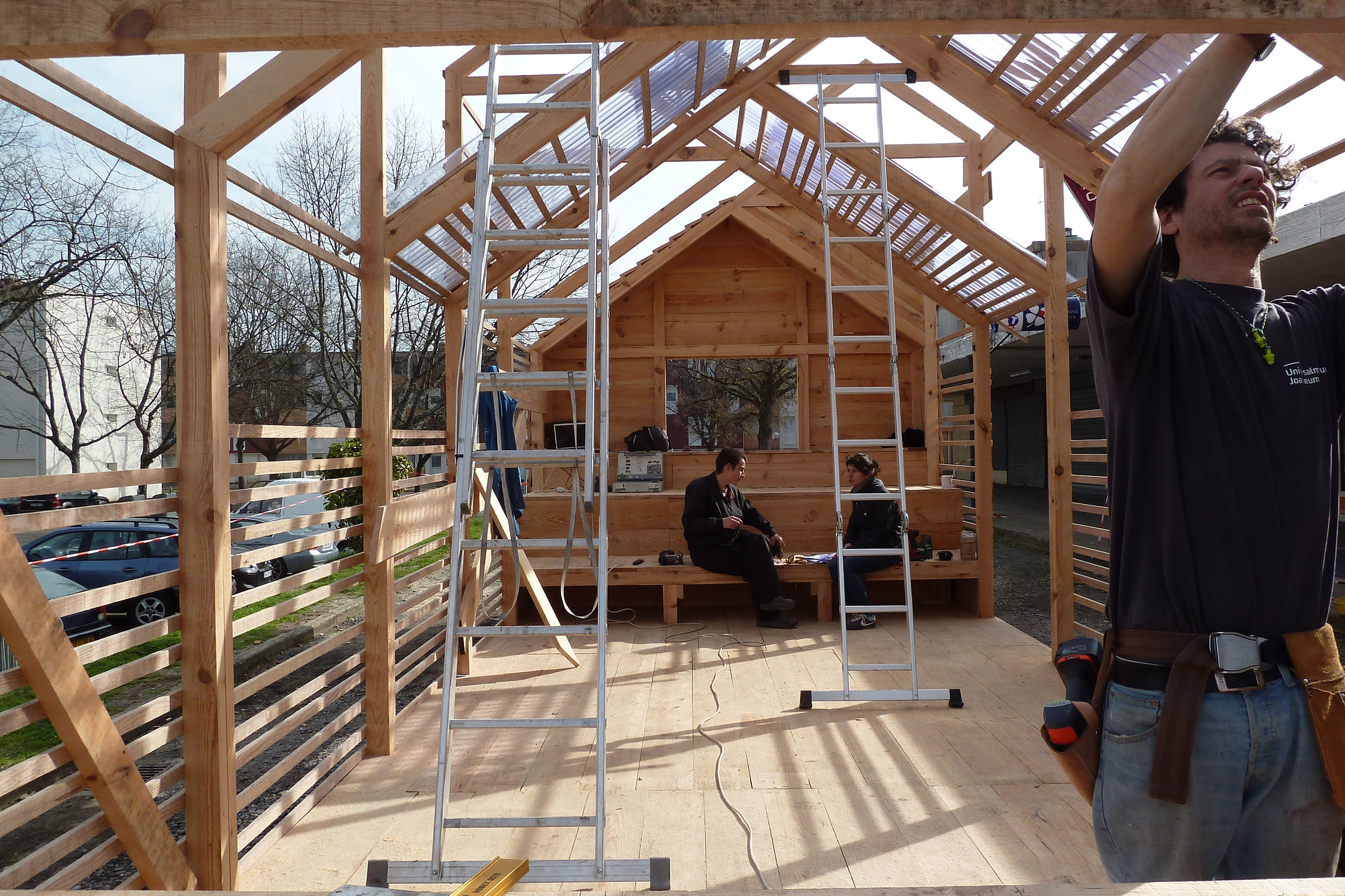
2013
Cabanon Cuyes
Cuyes neighbourhood
Dax

The city of Dax and the Office Publique de l’Habitat are engaged in the rehabilitation of the social housing neighbourhood of Cuyes. While the renovation of the housing, piloted by the Office, is underway, the Municipality wished to launch an urban study to rethink the outside spaces, with the wish that the inhabitants be actively involved in this reflection.
In order to mobilize and bring the population together in the middle of winter, we propose to build a small temporary architecture in the heart of the neighbourhood: the Cabanon Cuyes. This warm device for activation and urban prospective has made it possible to host workshops but also moments of conviviality, in particular around soup contests in the evening.
During 5 days, around a wood fire, the inhabitants of Cuyes came to exchange and share their ideas and desires to improve the life and living environment of their neighbourhood.
Hocine Aliouane Shaw, the urban designer in charge of the study was present during this intense period of reflexion. He was thus able to extract information vital to his work from the source and verify his project intuitions live.
This mission concluded with the elaboration of a master plan, recommending in particular the continuation of the participatory process in the operational phase of the project.
The Cabanon was dismantled, but the social dynamic generated by the approach continued after our mission : inhabitants continued to meet and relaunched a dormant local association to organise neighbourhood events and parties.
In 2016, the Municipality of Dax launches the mission of renovating public spaces, based on the recommendations of the master plan. We respond and are retained with the same team. We propose an approach to co-produce public spaces that we call : “J’peux pas j’ai chantier !” (I can’t, I have a building site !)
Last
projects
> all projectsAt the crossroads of art, territories and populations, our approach aims to promote the transition to sustainable, shared and welcoming cities, by proposing alternative ways of imagining and building our living environment and by exploring new forms of public space.

Bordeaux grow nature
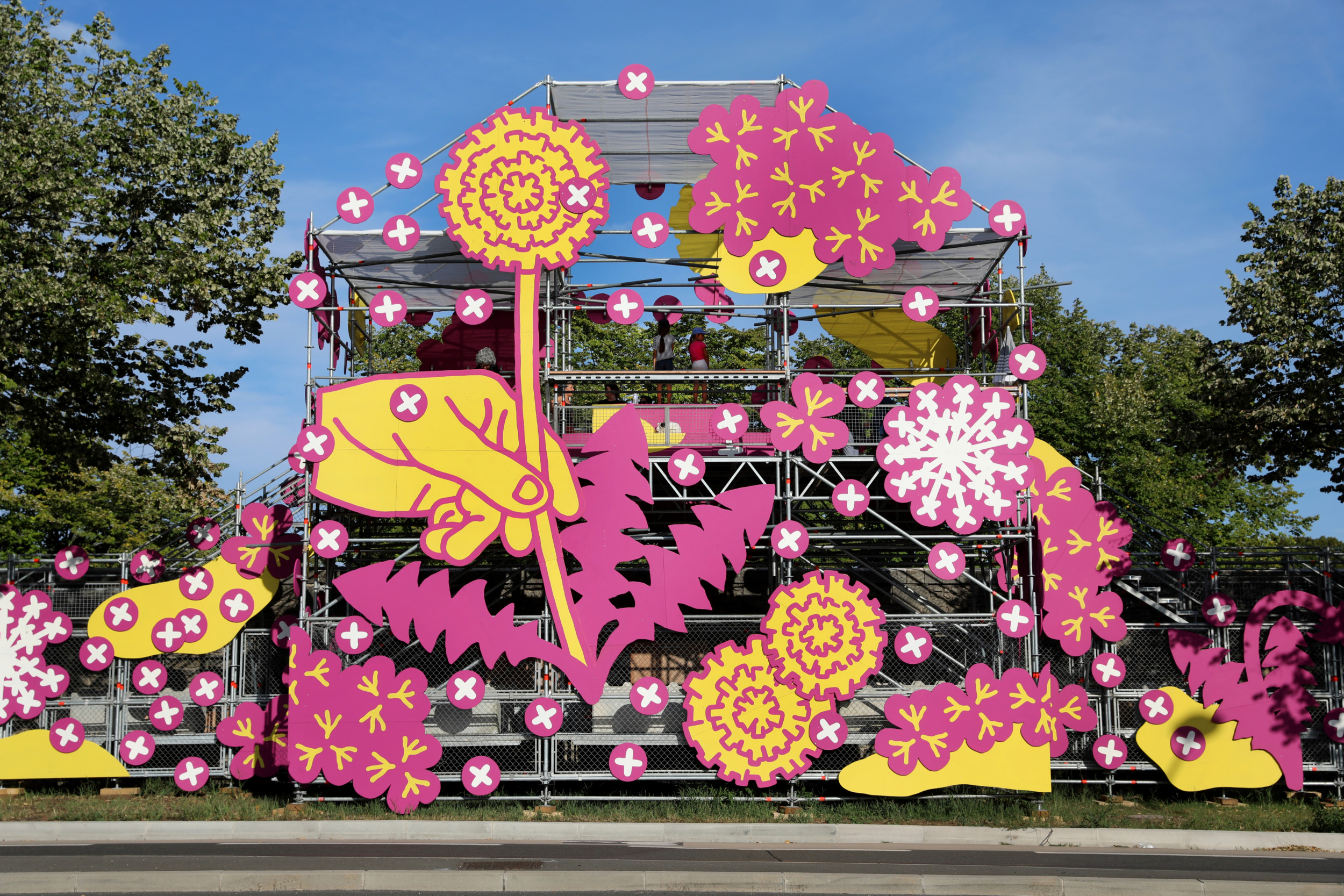
Beyond the boulevards
Bordeaux – France

The Koniscope
Cubzac-les-Ponts – France

Lacanau Bench
Lacanau – France

On vacation with Jeannie L
an artistic bicycle epic Bordeaux - Créon - Sauveterre de Guyenne - La Réole (Gironde)

LUMI
place in transition Bordeaux – France

Place Commune
Toulouse


